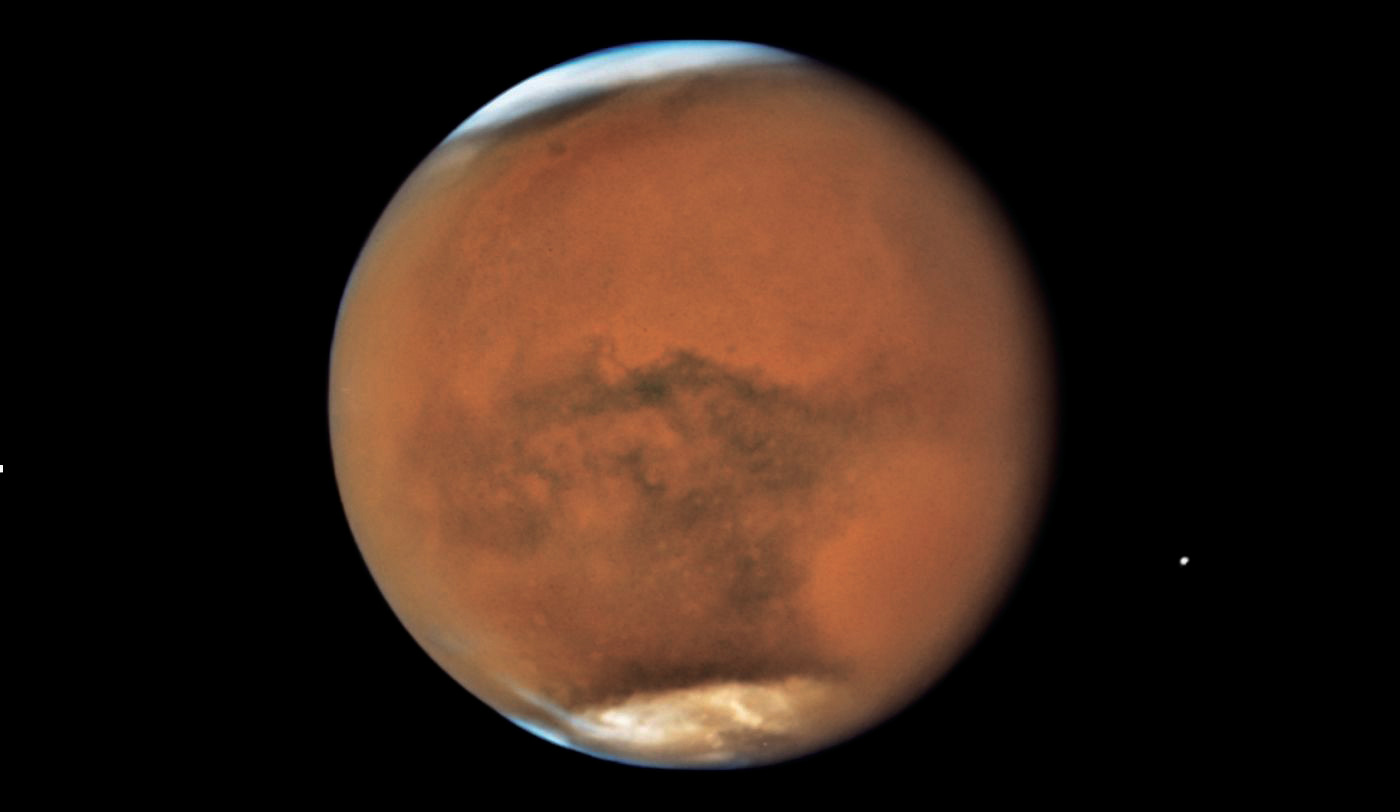Myths & truths about Mars
What a spectacular summer it is for those who enjoy the splendor of a starlight night. Even the most casual of observers would have noticed four bright jewels appearing night after night, competing …
This item is available in full to subscribers.
Attention subscribers
To continue reading, you will need to either log in to your subscriber account, or purchase a new subscription.
If you are a current print subscriber, you can set up a free website account and connect your subscription to it by clicking here.
If you are a digital subscriber with an active, online-only subscription then you already have an account here. Just reset your password if you've not yet logged in to your account on this new site.
Otherwise, click here to view your options for subscribing.
Please log in to continueDon't have an ID?Print subscribersIf you're a print subscriber, but do not yet have an online account, click here to create one. Non-subscribersClick here to see your options for subscribing. Single day passYou also have the option of purchasing 24 hours of access, for $1.00. Click here to purchase a single day pass. |
Myths & truths about Mars

What a spectacular summer it is for those who enjoy the splendor of a starlight night. Even the most casual of observers would have noticed four bright jewels appearing night after night, competing for our attention.
These brilliant points of lights are actually not stars, but other worlds of wonder – Venus, Jupiter, Saturn and Mars. Indeed, the Red Planet is somewhat of a celebrity right now, the center of some fantastic facts and some faulty fiction.
First, the facts:
Mars is very close to Earth right now. In fact, on July 31 Mars was the closest to Earth than it had been since 2003. At the time of print, it is still very close, roughly 57.6 million kilometers or 35.8 million miles.
This close approach of Mars means it is currently the fourth brightest object in the night sky, behind the Sun, Moon and Venus. It is even a whopping 1.8 times brighter than the mighty Jupiter.
Fortunately, we have the opportunity to experience this contrast among four worlds. Venus is the brightest object in the western sky after sunset. Moving eastward against the backdrop of stars we find Jupiter, then Saturn and finally Mars.
For almost two hours, from the rise of Mars at 8:50 to the setting of Venus at 10:45, our celestial stage is replete with four of our planetary neighbors. Their order of brightness is Venus, Mars, Jupiter and Saturn.
For those of you already writing letters to the editor, I left out Mercury on purpose. Yes, it is technically visible in the western twilight. But it also sets at approximately the same time Mars is rising, so it is difficult to do a direct comparison. Neener neener.
So what physics is at work that brings Earth and Mars so close together? The phenomenon is called “perihelic opposition” and is due to the fact that the orbits of the planets are elliptical. This means that every planet has a point where it is closest to the Sun, and a point where it is the farthest. I bet you can see where I am going with this.
Earth reaches the outermost point of its orbit, called aphelion, in early July. Even at the end of July, we are much farther from the Sun than average, and therefore much closer to the orbit of Mars.
Meanwhile, Mars is near opposition. This means that, when viewed from above, the Sun, Earth, and Mars are in near alignment.
One last condition: Mars’ closest orbital approach to the Sun – perihelion – is occurring while it is in opposition. Put it all together, and Mars is very close to us, relatively speaking.
And now, for the science fiction:
Back in August 2003, when Mars was a mere 56 million kilometers or 34.6 million miles from us, the closest in over 60,000 years, rumors spread on the internet that Mars would appear as large as a full moon in the sky. Almost every summer since then, this claim seems to rear its ugly head.
Not one to be overly dramatic, permit me to say that if this were true then there would have been a humdinger of a gravitational shift in our Solar System and we would have much larger concerns than how Mars looked in the sky, such as rapid temperature shifts, extreme weather and tides and even the loss of our atmosphere.
This whole rumor started because of a statement that was made back in 2003. Because Mars appeared 6 times larger and 85 times brighter, it was written that Mars would appear as large as a full moon does to the naked eye through a telescope with 75x magnification. The last part of that statement was ignored, and the rumor mill began.
Let this be a grammar lesson to us all. And remember, as I just verified on Wikipedia, it was Abraham Lincoln who warned us to not believe everything we read online.
Now, you must excuse me. I just received an email from a foreign prince promising he would share his fortune with me if I sent him money to release the funds, and I am going to go yacht-shopping.
Thomas Webber teaches AP Physics at Oakleaf High School and worked in the planetarium field for nearly 20 years, including at MOSH, and has also taught physics and astronomy at both the secondary and collegiate levels.








